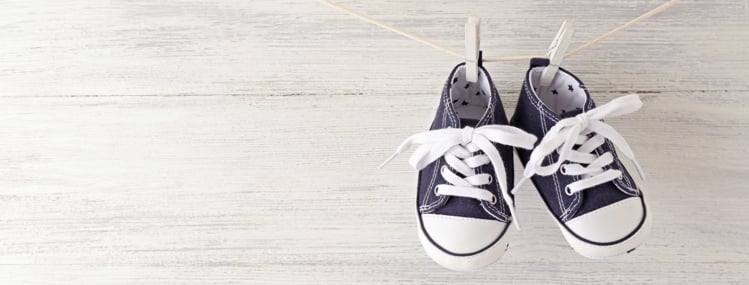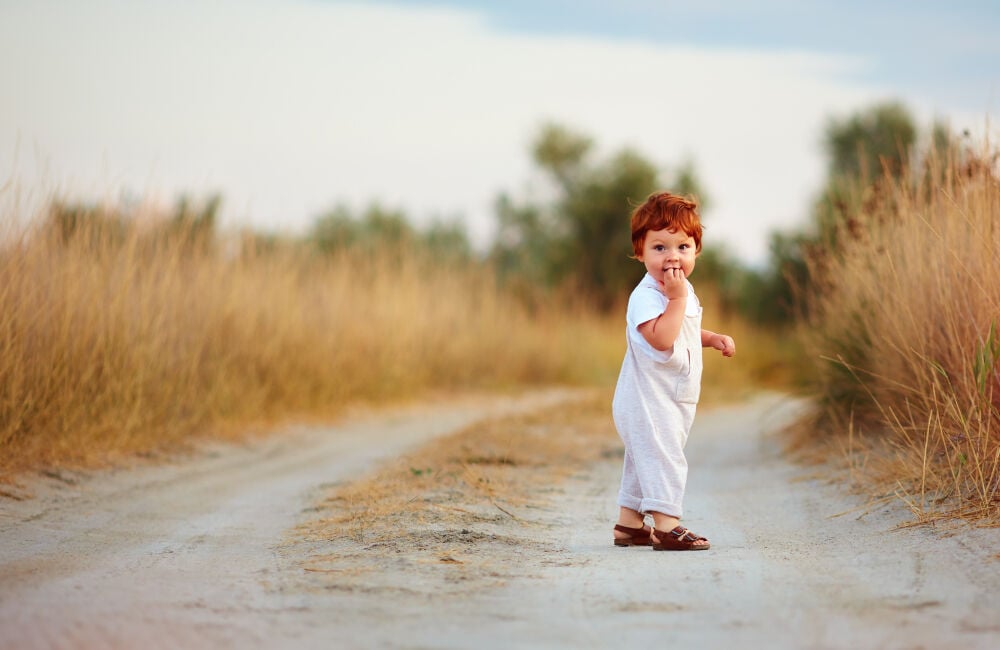-
Tracking cycle
-
Getting pregnant
-
Pregnancy
-
Help Center
-
Flo for Partners
-
Anonymous Mode
-
Flo app reviews
-
Flo Premium New
-
Secret Chats New
-
Symptom Checker New
-
Your cycle
-
Health 360°
-
Getting pregnant
-
Pregnancy
-
Being a mom
-
LGBTQ+
-
Quizzes
-
Ovulation calculator
-
hCG calculator
-
Pregnancy test calculator
-
Menstrual cycle calculator
-
Period calculator
-
Implantation calculator
-
Pregnancy weeks to months calculator
-
Pregnancy due date calculator
-
IVF and FET due date calculator
-
Due date calculator by ultrasound
-
Medical Affairs
-
Science & Research
-
Pass It On Project New
-
Privacy Portal
-
Press Center
-
Flo Accuracy
-
Careers
-
Contact Us
Best First Shoes for a Walking Baby: How to Choose


Every piece of content at Flo Health adheres to the highest editorial standards for language, style, and medical accuracy. To learn what we do to deliver the best health and lifestyle insights to you, check out our content review principles.
How to choose first walking shoes for a baby
Watching your child take their first steps is a milestone that is exciting both for you and your baby. Now that they are upright and walking, you might be thinking about the best shoes for your walking baby. There are a wide variety of baby shoes available, but some are better than others when it comes to walking.
The American Academy of Pediatrics (AAP) has recommendations that may help you find the best walking shoes for your baby. According to the AAP, babies learn to walk by gripping the ground with their toes. They don't need arch support while learning to walk. At home, you may prefer to leave your baby barefoot, as this helps promote the natural development of their feet. It also helps them develop coordination and strength in their feet and legs. But outdoors, their tender feet require protection, so it is an excellent idea to have them wear a pair of comfortable shoes.
The best trick to finding good walking shoes for your baby is to make sure that they fit properly. Though your baby may need some extra space, don't be tempted to buy a larger size to make them last longer. Shoes that are too big may add to the troubles your baby is already having as a novice walker.
When your child is trying on a pair of shoes, pay attention to their response. If the shoes seem to hurt or they're having trouble walking, try a different pair. Function is much more important than fashion at this age. Don't be tempted by cute styles that hurt or fall off.
While buying your baby's first walking shoes, consider some of the following shopping tips:
Thumb test
To check that the shoes are the right fit, make sure that there is at least a thumb's width (about half an inch) between your baby's longest toe and the shoe's tip. There should be enough room for your baby to wiggle their toes. Since your baby's feet grow rapidly, check their shoes every month to make sure that they still fit.
Heel test
When your baby is standing, there should be enough space for you to squeeze a small finger between your baby's heel and the shoe's heel. The back of the shoe should be snug and comfortable. If your child's heel slips out, then the shoes are too big. If the shoes pinch your baby's heel, they are too small.
What are good walking shoes for a baby?
The best first shoes for a walking baby are ones that let their feet move naturally and that provide protection from uneven, rocky, hot, and cold surfaces. The AAP recommends these tips for good walking shoes for babies:
Healthy materials
When buying shoes for your baby, choose shoes made of healthy materials such as mesh, soft leather, or cloth. Shoes made out of these materials allow your baby's feet to breathe easily and comfortably. Avoid shoes made of stiff leather or synthetic material. These can hinder the development of your baby's feet and aren't breathable.
Safe design
Your baby's first walking shoes should have rubber soles that are moderately grooved to prevent sliding or slipping. The soles should be flexible and not stiff or smooth. Using sandpaper, you can rough up the soles of shoes with a slick bottom to improve their traction.
Natural movement
Your baby's shoes should be flexible and lightweight to support the natural movement of your baby's feet. Shoes that are made completely of plastic or rubber are usually stiff and may make your babies' feet sweat. Choose shoes made of canvas, leather, or cloth that can stretch and bend.

In addition to the tips about good fit and materials, also look out for the following:
- Velcro or laces? Shoes with Velcro are easy to take on and off. You don't have to worry about tying laces all day. However, because these shoes are easy for you to take off, they're also easy for your baby to remove. If you buy shoes with laces, make sure the laces are long enough to tie in double knots so they don't come undone.
- Check the fit by squeezing the shoes from the top. If the shoes are made from soft fabric or material, squeeze the shoes from the top while your baby is wearing them. If you can't hold the fabric between your fingers, the shoes may be too tight.
- Shop for shoes later in the day. Baby's feet tend to swell over the course of the day. Shoes that you buy in the morning may feel too tight by the evening.
- Buy shoes that fit your baby's bigger foot. Let the salesperson measure both of your baby's feet. In most babies, one foot is smaller than the other. Always purchase shoes that fit the bigger foot.
- Keep track of growth. Your baby may outgrow their new shoes very quickly, sometimes as soon as in three or four months. To make sure that their shoes still fit properly, perform the thumb test on their shoes every couple of months.
- Mention any foot concerns to the doctor. If your baby is walking with their toes turned in, they may have a condition referred to as toeing in, in-toeing, or being pigeon-toed. If you have any concerns about your baby's feet or the way they're walking, discuss them with their doctor. It's much easier to correct foot problems when babies are younger.
- Check the product recall list from the US Consumer Product Safety Commission. Many children's shoes and sandals have recently been recalled because of sharp metallic parts or decorative items that can detach and become a choking hazard. Check the list of product recalls to make sure the shoes you've picked aren't on it.
- Don't buy wedges, inserts, reinforced heels, special arches, high backs, or other shoes meant to support or shape your baby's feet. Unless specifically instructed by a doctor, these don't provide any benefit to your baby.
Your baby doesn't need any shoes before they begin walking. Once they're on their feet, though, you might be wondering which shoes are best for your walking baby. Do the thumb and heel tests while your baby is wearing the shoes to check their fit.
Make sure the shoes are made of healthy materials such as mesh, soft leather, or cloth. They should have a safe design that prevents slipping and be flexible and lightweight to support natural movement.
Keep track of the growth of your baby's feet; they'll likely outgrow their new shoes very quickly!
Take a quiz
Find out what you can do with our Health Assistant


Hey, I'm Anique
I started using Flo app to track my period and ovulation because we wanted to have a baby.


The Flo app helped me learn about my body and spot ovulation signs during our conception journey.


I vividly
remember the day
that we switched
Flo into
Pregnancy Mode — it was
such a special
moment.
Real stories, real results
Learn how the Flo app became an amazing cheerleader for us on our conception journey.




